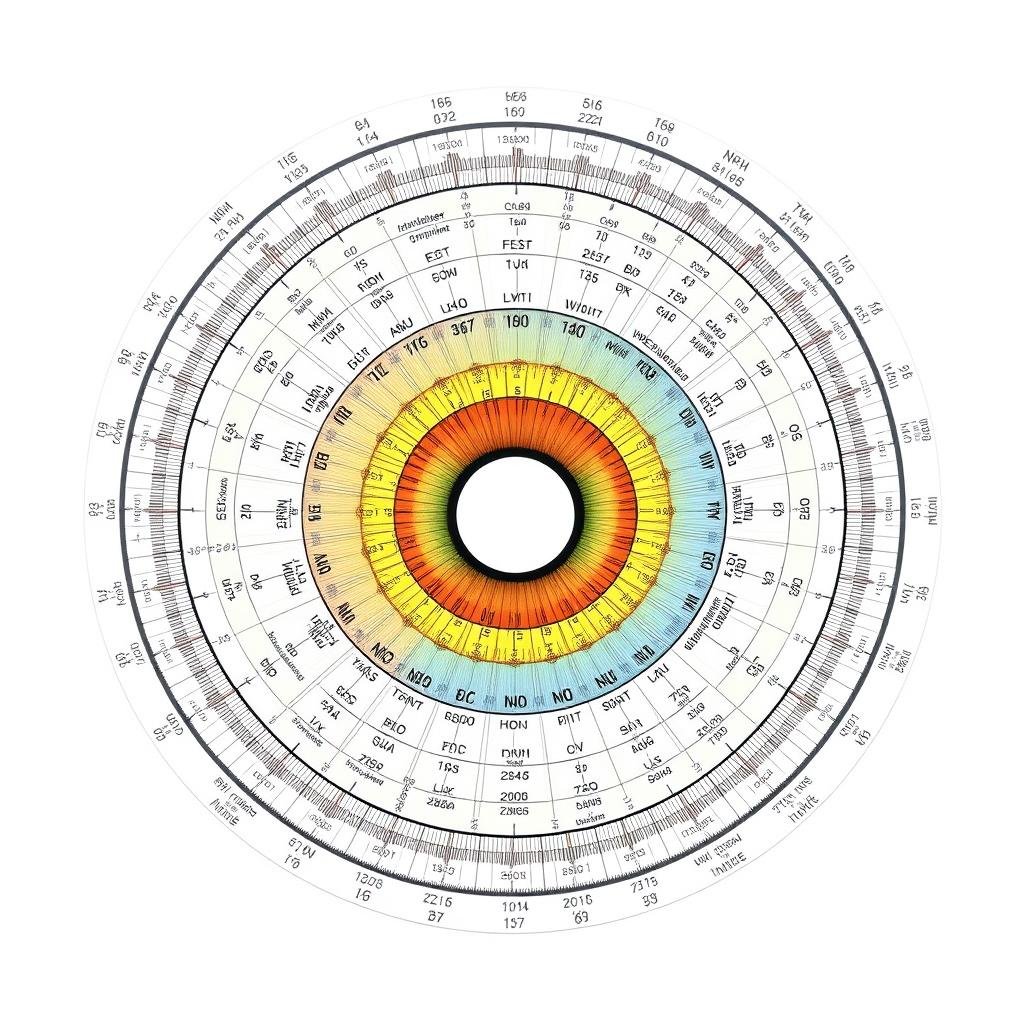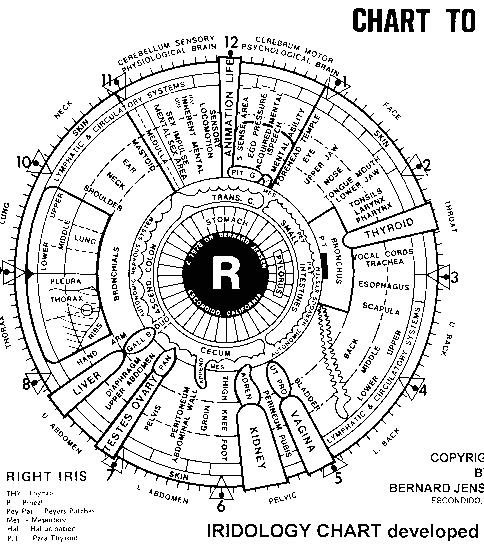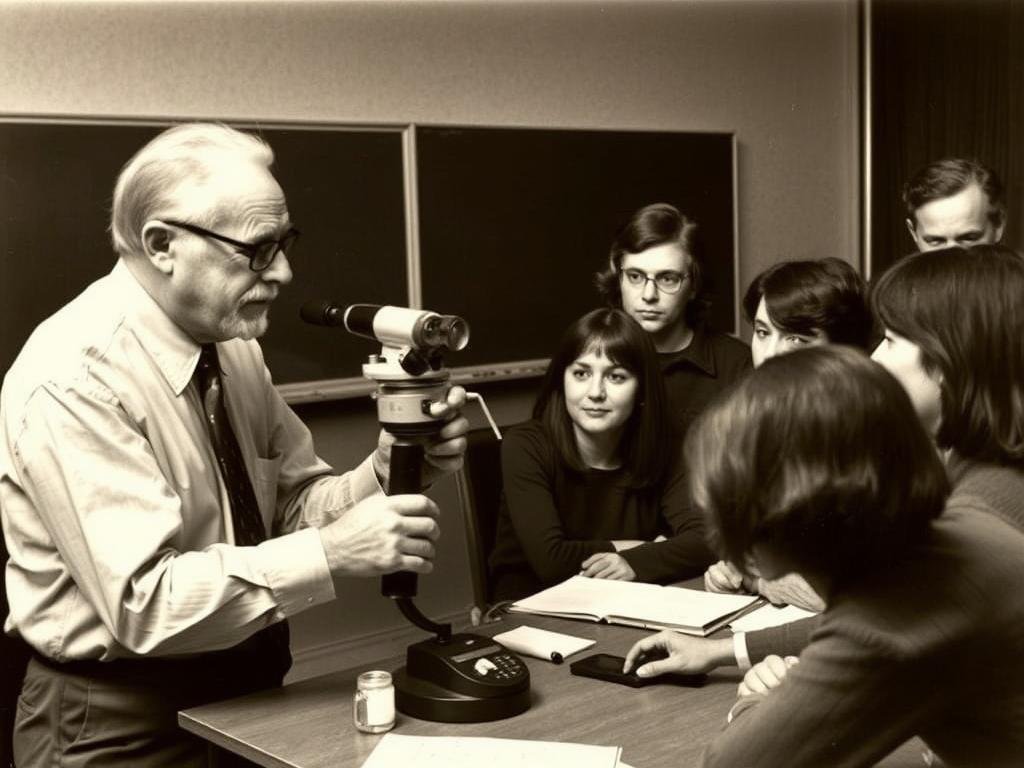The world of iridology owes much to the pioneering work of Bernardo Jensen, whose comprehensive iris analysis system revolutionized how practitioners assess health through the eyes. His detailed iridology chart remains the gold standard for mapping the intricate relationship between iris markings and bodily systems. This guide explores the depth and significance of Bernard Jensen's iridology chart, explaining its zones, markings, and practical applications for health assessment.
The Legacy of Bernardo Jensen in Iridology

Dr. Bernard Jensen pioneered modern iridology techniques in the United States
Bernardo Jensen (1908-2001) was a visionary in the field of natural medicine who dedicated his life to understanding the connection between iris patterns and health. After recovering from his own health challenges using natural approaches, he became fascinated with how the body reveals its condition through the eyes. His journey into iridology began after being mentored by notable figures including Victor Rocine, a Norwegian homeopath who introduced him to natural healing principles.
As a chiropractor and nutritionist, Bernardo Jensen established several nature cure sanitariums in California where he treated thousands of patients with chronic conditions. During this extensive clinical work, he meticulously documented iris patterns and their correlation with health conditions, gradually developing what would become the most comprehensive iridology chart system in the Western world.
What distinguished Bernard Jensen's approach was his systematic documentation and classification of iris signs. Over 50 years of clinical observation, he refined his chart to create a practical tool that practitioners could use to assess overall health and identify potential areas of concern in the body.
Understanding the Bernardo Jensen Iridology Chart Structure



The classic Bernard Jensen iridology chart divides the iris into zones corresponding to body systems
O Bernardo Jensen iridology chart is organized as a circular map that divides the iris into zones corresponding to different organs and body systems. This chart follows a logical arrangement where the body is essentially “mapped” onto the iris in a systematic way. Understanding this organization is fundamental to applying iridology in practice.
The Zonal Approach of Bernard Jensen's Gráfico
The chart divides the iris into seven concentric zones radiating from the pupil to the outer edge of the iris. Each zone represents different body systems:
- Zone 1 (Stomach Zone): The area immediately surrounding the pupil, representing digestive function
- Zone 2 (Intestinal Zone): Representing the small and large intestines
- Zone 3 (Nutritive Zone): Relating to metabolic and nutritional processes
- Zone 4 (Blood Zone): Corresponding to circulation and blood quality
- Zone 5 (Muscular Zone): Representing muscular tissues and function
- Zone 6 (Skeletal Zone): Corresponding to bones and skeletal structure
- Zone 7 (Skin Zone): The outermost zone representing the skin and elimination
The Clock Face Division in Bernard Jensen's Sistema
Beyond the concentric zones, Bernardo Jensen further divided the iris using a clock face analogy. This division creates specific sections that correspond to particular organs and body regions:
Aqui estão mais detalhes, órgãos e sistemas de detalhamento representados por cada olho. Esses gráficos servem ao guia útil Identifica a preocupação com base nos sinais de iridologia correspondentes.

O olho esquerdo do gráfico de iridologia (representa o corpo lateral esquerdo)
| Localização em iridologia |
A área/órgão do corpo corresponde |
Principais indicadores de saúde |
Possíveis problemas ou desequilíbrios |
| 12 horas |
Cérebro esquerdo (psicológico) |
Saúde mental, estado emocional |
Estresse, ansiedade, depressão, exaustão mental |
| 1-2 horas |
Face/pescoço esquerdo |
Saúde da pele, tensão nos músculos do pescoço |
Enxaqueca, dor no pescoço, distúrbios da ATM, questões de sinusite |
| 2-3 horas |
Garganta esquerda |
Função respiratória e de garganta |
Dor de garganta, rouquidão, infecções respiratórias |
| 3-4 horas |
Esquerda na parte superior das costas |
Saúde da coluna vertebral, parte superior das costas e músculos do ombro |
Tensão nas costas, dor no ombro, má postura |
| 4-5 horas |
Estômago esquerdo |
Função digestiva, produção de ácido |
Úlceras estomacais, indigestão, ácido baixo estomacal |
| 5-6 horas |
Região pélvica esquerda |
Órgãos reprodutivos, sistema urinário |
Questões menstruais, infecções do trato urinário, dor pélvica |
| 6-7 horas |
Esquerda lombar/pernas |
Saúde musculoesquelética, circulação das pernas |
Ciática, problemas de quadril, dor lombar, cólicas pernas |
| 7-8 horas |
Rim esquerdo |
Função renal e urinária |
Pedras nos rins, problemas da bexiga, retenção de água |
| 8-9 horas |
Pulmões esquerdos |
Saúde respiratória, capacidade pulmonar |
Asma, bronquite crônica, respiração de falta |
| 9-10 horas |
Coração esquerdo |
Sistema cardiovascular, bem-estar emocional |
Doença cardíaca, dor no peito, problemas circulatórios |
| 10-11 horas |
Órgãos digestivos esquerdos |
Saúde do sistema digestivo |
Constipação, blaato, má digestão, função hepática |
| 11-12 horas |
Pâncreas/baço esquerdo esquerdo |
Regulação do açúcar no sangue, saúde imunológica |
Diabetes, hipoglicemia, problemas digestivos, problemas autoimunes |

Iridology Right Eye Chart (Represents Right Side Body)
| Localização em iridologia |
A área/órgão do corpo corresponde |
Principais indicadores de saúde |
Possíveis problemas ou desequilíbrios |
| 12 horas |
Right brain (psychological) |
Cognitive health, mental clarity |
Cognitive decline, mental fatigue, stress |
| 1-2 horas |
Right face/neck |
Skin health, tension in right side neck |
Jaw pain, tension headaches, sinus issues |
| 2-3 horas |
Right throat |
Right lung, thyroid, and throat health |
Sore throat, cough, hoarseness, thyroid imbalance |
| 3-4 horas |
Right upper back |
Upper spine, shoulder, and lung health |
Tension in shoulders, respiratory issues, upper back pain |
| 4-5 horas |
Right stomach |
Digestive issues, stomach acid production |
Heartburn, stomach ulcers, indigestion |
| 5-6 horas |
Right pelvic region |
Reproductive organs, right kidney, urinary system |
Prostate issues, menstrual problems, urinary tract infections |
| 6-7 horas |
Right lower back/legs |
Circulation, musculoskeletal health |
Sciatica, muscle cramps, leg circulation issues |
| 7-8 horas |
Right kidney |
Kidney function, fluid retention |
Kidney disease, urinary infections, dehydration |
| 8-9 horas |
Right lungs |
Respiratory health, lung function |
Bronchitis, asthma, chronic obstructive pulmonary disease |
| 9-10 horas |
Right heart |
Cardiovascular health, heart function |
Hypertension, heart disease, emotional stress |
| 10-11 horas |
Right digestive organs |
Digestion and nutrient absorption |
Constipation, IBS, liver problems, indigestion |
| 11-12 horas |
Right pancreas/spleen |
Immune system, blood sugar regulation |
Diabetes, immune system weakness, digestive disorders |
This detailed mapping system allows practitioners to correlate specific iris markings with particular organs or systems, creating a comprehensive picture of the body’s condition according to iridology principles.
Interpreting Iris Signs Using Bernard Jensen's Methodology
Bernardo Jensen identified numerous iris signs that indicate different health conditions. His detailed classification system helps practitioners recognize patterns that may suggest imbalances or weaknesses in specific body areas.
Key Iris Markings in Bernard Jensen's Gráfico
Structural Signs
- Lacunae: Enclosed darkened areas indicating tissue damage
- Crypts: Open spaces in the iris fiber structure
- Radii Solaris: Spoke-like lines radiating outward
- Anéis nervosos: Circular lines indicating nervous tension
Color Signs
- White: Inflammation or acute activity
- Yellow: Kidney or urinary involvement
- Orange: Liver or gallbladder issues
- Brown: Liver imbalance or toxicity
- Black: Severe tissue destruction
Pupil Signs
- Flattened Pupil: Possible nervous system stress
- Dilated Pupil: Adrenal fatigue or exhaustion
- Constricted Pupil: Irritation or stimulation
- Pupil Flare: Digestive system weakness

Dr. Jensen dedicated decades to teaching his iridology system to practitioners worldwide
Bernardo Jensen emphasized that these signs should not be interpreted in isolation but as part of a comprehensive assessment. He taught that the iris reveals constitutional strengths and weaknesses rather than providing specific disease diagnoses. This holistic approach aligns with his broader philosophy of treating the whole person rather than just symptoms.
Practical Applications of the Bernardo Jensen Gráfico de Iridologia
O Bernardo Jensen iridology chart serves as more than just a diagnostic tool—it provides a framework for understanding the body’s interconnected systems and guiding holistic health approaches.
How Practitioners Apply Bernard Jensen's Chart Today
Modern practitioners use Bernard Jensen's chart in several key ways:
- Constitutional Assessment: Identifying inherent strengths and weaknesses in body systems
- Preventative Guidance: Suggesting supportive measures for potentially vulnerable areas
- Nutritional Planning: Developing targeted nutritional protocols based on iris indications
- Progress Monitoring: Tracking changes in iris patterns over time as health improves
- Client Education: Using the visual nature of iridology to help clients understand their health
Need Expert Iridology Guidance?
Our specialists can help you understand what your iris reveals about your health using Bernard Jensen's proven methodology.
Call Us: 8613-51090-74-01
Case Example: Using Bernard Jensen's Chart in Practice
“When I first examined Sarah’s iris, I noticed distinct lacunae in the intestinal zone at approximately 7 o’clock in her right iris. Following Bernard Jensen's chart, this indicated potential weakness in the ileocecal valve area. After discussing her symptoms of periodic digestive discomfort, we developed a targeted nutritional protocol. Six months later, not only had her symptoms improved, but the iris markings had become less pronounced—exactly as Dr. Jensen’s work predicted.”
— Dr. Elizabeth Chen, Iridology Practitioner
This case exemplifies how Bernard Jensen's detailed mapping system continues to guide practitioners in developing personalized health protocols based on iris analysis.
Evolução de Bernard Jensen's Chart in Modern Practice
Enquanto Bernard Jensen's original chart remains foundational, technology has enhanced how practitioners apply his methodology:
- Digital Imaging: High-resolution cameras capture detailed iris images
- Software Analysis: Programs overlay Jensen’s chart onto digital iris photos
- Comparative Analysis: Tracking subtle changes over time through digital records
- Enhanced Visualization: Digital magnification reveals details invisible to the naked eye
Did you know? Bernardo Jensen documented over 1,000 iris photographs throughout his career, creating one of the most extensive iridology research collections of his time.
Esses avanços tecnológicos fizeram Bernard Jensen's methodology more accessible and precise, while still honoring the fundamental principles he established through decades of clinical observation.
Perspectivas científicas em Bernard Jensen's Iridologia
The scientific community has varying perspectives on iridology as developed by Bernardo Jensen. While conventional medicine has been skeptical of some claims, research continues to explore potential correlations between iris patterns and health conditions.
Evidência de apoio
- Some studies show correlations between iris patterns and genetic predispositions
- Research on iris structure as a potential biomarker continues to develop
- Clinical experience of practitioners reports positive outcomes
- Non-invasive nature makes it a safe complementary assessment tool
Limitações
- Limited large-scale controlled studies validating all aspects of iridology
- Variation in practitioner interpretation can affect consistency
- Not intended to replace conventional medical diagnosis
- Some correlations may be coincidental rather than causal
Bernardo Jensen himself acknowledged that iridology should be used as part of a comprehensive health assessment rather than as a standalone diagnostic tool. This balanced perspective continues to guide responsible practitioners who use his methodology.
Resources for Learning Bernard Jensen's Iridology System

Dr. Jensen authored numerous books detailing his iridology system and natural healing approaches
For those interested in learning more about Bernard Jensen's iridology system, several valuable resources are available:
Essential Books
- A ciência e a prática da iridologia – Jensen’s foundational text
- Iridologia simplificada – An accessible introduction to his system
- Iridologia: a ciência e a prática nas artes da cura – Advanced concepts
- Dr. Jensen’s Guide to Better Bowel Care – Complementary health approaches
Training Programs
- Bernard Jensen International certification courses
- International Iridology Practitioners Association programs
- Online courses based on Jensen’s methodology
- Workshops offered by certified Jensen method instructors
Tools and Equipment
- Professional iris cameras
- Printed Jensen iridology charts
- Digital analysis software
- Magnification equipment
- Reference materials and case studies
Interested in Iridology Tools and Resources?
Contact us to learn about available Bernardo Jensen iridology charts, books, and professional equipment for practitioners.
E-mail: Lucy@iriscope.org
Perguntas frequentes sobre Bernard Jensen's Gráfico de Iridologia
How accurate is Bernard Jensen’s iridology chart for health assessment?
Bernard Jensen's chart is best viewed as a tool for identifying potential areas of weakness or imbalance rather than diagnosing specific diseases. Its accuracy depends on the practitioner’s skill and experience in interpretation. Many practitioners report valuable insights when used as part of a comprehensive health assessment approach.
How does Bernard Jensen’s chart differ from other iridology systems?
Bernard Jensen's chart is more detailed and systematically organized than many other systems. While European iridology charts (particularly German systems) may use different zone mappings, Jensen’s American approach is distinguished by its comprehensive organ mapping and practical clinical application focus.
Can I learn to use Bernard Jensen’s iridology chart on my own?
While Jensen’s books provide excellent information, proper application of his iridology system typically requires formal training. The nuances of iris interpretation are best learned through guided instruction from experienced practitioners who can demonstrate proper technique and interpretation.
Does eye color affect the application of Bernard Jensen’s chart?
Yes, Bernardo Jensen recognized that different colored irises present different challenges in interpretation. Blue eyes typically show markings more clearly, while brown eyes require more careful observation. His system includes specific guidelines for interpreting different eye colors.
The Enduring Legacy of Bernard Jensen's Gráfico de Iridologia
The iridology chart developed by Bernardo Jensen represents one of the most significant contributions to natural health assessment in the 20th century. Through meticulous observation and documentation, Jensen created a system that continues to guide practitioners in understanding the complex relationship between iris patterns and bodily health.
While debates about iridology’s scientific standing continue, there’s no denying the impact of Bernard Jensen's work in advancing holistic approaches to health assessment. His emphasis on treating the whole person rather than isolated symptoms aligns with contemporary integrative medicine principles.
For those interested in exploring this fascinating field, Bernard Jensen's chart provides a structured, comprehensive framework that has stood the test of time. Whether you’re a health practitioner seeking additional assessment tools or an individual interested in holistic health approaches, the Jensen iridology system offers valuable insights into the body’s intricate interconnections as revealed through the window of the eyes.
Discover How Iridology Can Enhance Your Health Journey
Our team of specialists is trained in Bernard Jensen's iridology methodology and can provide personalized iris analysis and health guidance.


























